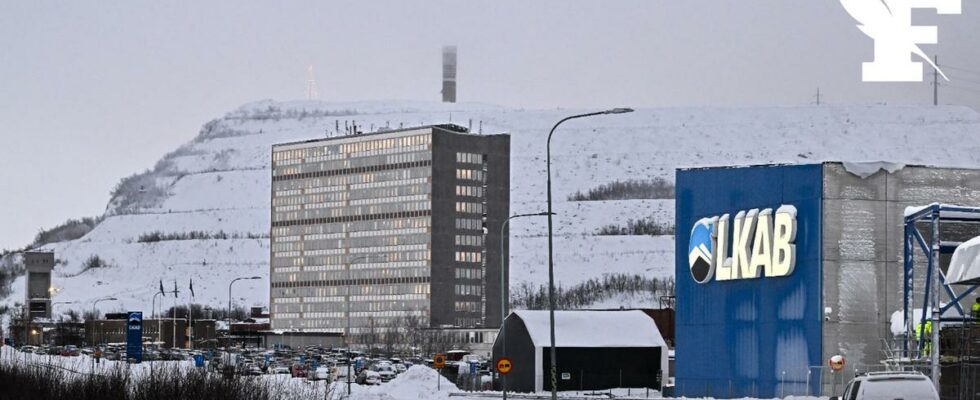This discovery is important at a time when Europe is concerned about its dependence on the supply of these minerals, which are used in particular to manufacture the batteries of electric vehicles and the turbines of wind turbines.
Sweden announced on Thursday the discovery of the “largest known deposit» of rare earths from Europe, a small step towards more autonomy for the Old Continent anxious to reduce its dependence on China for these metals essential to the green transition.
More than one million tonnes: the estimated reserves of the deposit identified in the Kiruna mining region, in the Far North of the Scandinavian country, bode well for European industry, which needs these metals to manufacture electric vehicles or more wind turbines. “It is the largest known deposit of rare earth elements in our part of the world, and it could become an important building block for the production of critical raw materials absolutely crucial for the green transition.“, rejoiced Jan Moström, CEO of the Swedish mining group LKAB at the origin of the discovery. The exact extent of the vein remains to be determined but, according to current estimates, it would represent less than 1% of the world’s reserves, estimated so far at 120 million tonnes by the US Geological Survey.
This discovery is nonetheless good news for a European Union (EU) scalded by its energy dependence on Russia and which is now seeking to emancipate itself in the field of rare metals. Currently, 98% of the rare earths used in the EU are imported from China, which therefore has a virtual monopoly in the sector. “Our rare earth needs alone will be multiplied by five by 2030said European Commission President Ursula von der Leyen in her State of the Union address last September. “We must avoid finding ourselves again in a situation of dependence, as with oil and gas“, she had warned, announcing for the occasion the development, still in progress, of a European regulation on critical raw materials.
Exponential growth in demand
Among its efforts to curb global warming, the EU has put an end to sales of new petrol and diesel cars from 2035, to be replaced by electric models. “Electrification, self-sufficiency and EU independence from Russia and China will start in the minesaid the Swedish Deputy Prime Minister and Minister for the Economy and Energy, Ebba Busch, whose country has held the rotating presidency of the union since the beginning of the year.
The announcement of LKAB, a public group, was made during a visit to Kiruna by a delegation from the European Commission. In the short term, Ebba Busch underlined the importance for the EU of “to diversify» the origin of its imports. “But in the long term, we cannot depend exclusively on trade agreements“, did she say. According to LKAB, “A long wayremains to be covered before the deposit can be exploited.
Asked about the expected date of the first pickaxes, Jan Moström replied that it would depend on the demand from car manufacturers and the speed of obtaining the necessary authorizations which, in his experience, require “between 10 and 15 years old“. “I am confident that this will have a considerable impact“to reduce dependence on China, he explained to AFP, believing that the Kiruna deposit would make it possible to manufacture”a significant part» magnets used in the motors of electric cars produced in Europe by 2035. Sweden already had a significant, but smaller, deposit at Norra Kärr in the south of the country. This is currently unused. In Europe, no rare earth mine currently exists, recalled LKAB.
Read alsoElectric car: will the world run out of lithium?
In addition to the permanent magnets of wind turbines and electric cars, some of these rare metals are used in the composition of television screens, drones or even hard drives. To replace hydrocarbons and achieve carbon neutrality in 2050, the EU will need 26 times more rare earths by that date than today, the KU Leuven University has calculated.
SEE ALSO – Electric batteries: one of the largest lithium mines in Europe will be put into operation in France by 2027
